A house within a house: Historic Sant Cugat's hidden gem
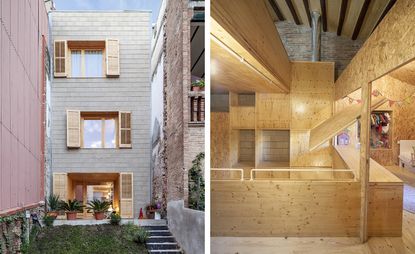
Creating a comfortable family home that effectively deals with site restrictions and a sensitive cultural and historical context - while remaining innovative and aesthetically consistent - is a challenge for any architect. And yet, Barcelona-based Josep Ferrando's latest house in Spain's Sant-Cugat - a Catalan town known for its rich cultural heritage - does just that.
Casa Sant-Cugat is a hidden gem within a historical hub. The architect kept the existing street façade and it is only when entering the house that the contrast between old and new becomes visible. With this project, construction and preservation issues were present from the word go, and it seemed that a constant battle between finding structural solutions and creating a beautiful home would be inevitable. The house's external façade and roof were listed, so no changes were possible there. At the same time, the building had to be less than five metres wide and had to deal with a complex topography, as the site was constrained between two streets with a considerable level difference.

Take an interactive tour of House in Cugat
The solution is found within the house's clever internal arrangement. A new structure made from concrete blocks was built inside the original historical one, fitted between the neighbouring houses' walls. Three distinct volumes were created within; one acts as a storage space, another is dedicated to circulation and the third hosts all the primary rooms. The architect used a Raumplan model internally - this is a layout method that works with individual rooms, instead of open plan spaces, and creates a balance of discreet and dynamic areas in the house. Interiors spread across four levels. A void runs through each floor.
Laminated wooden panels and the L-shaped metal profiles holding them define the interior. The wood is left exposed throughout the house creating a warm and comfortable environment. The height difference between the floors generates views across levels and allows light to penetrate everywhere. The void that runs through the upper levels helps with that, while also acting as the house's heart and main public area.

The architect was not allowed to touch the front façade and the roof, as they are both listed
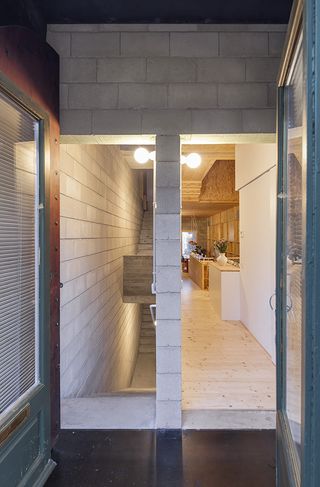
Planning regulations and the plot's narrow shape meant that the building could not be any larger than five metres wide
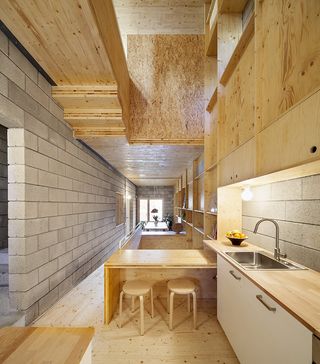
The house's first floor features an open space that encompases a kitchen, breakfast bar and dinning area

The interiors feature laminated wood panels that are left exposed
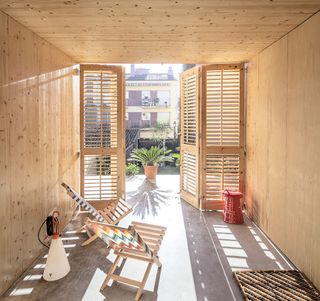
Natural sunlight penetrates the building through openings such as the wooden doors on the ground floor that lead out to the rear garden
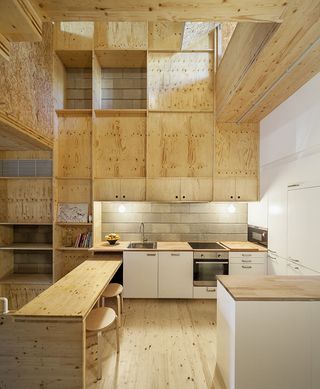
While the kitchen's wooden panels are left exposed, in keeping with the overall interior style, some finishes, like cupboards, feature colour
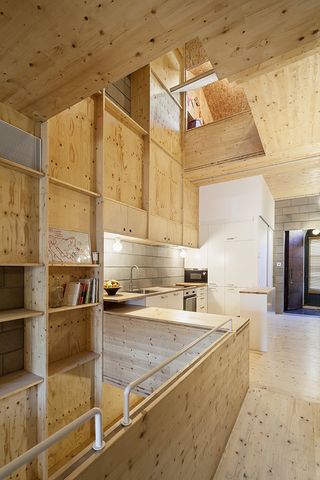
One of the house's voids cuts through the kitchen making the space feel bigger
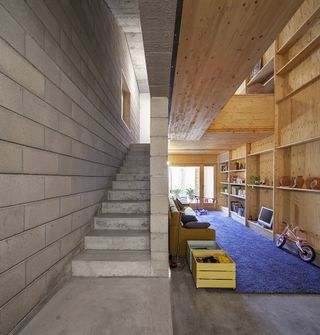
The interplay between the superimposed wood and the exposed concrete structure create a playful contrast

The bespoke wooden shelving running across one of the main walls of the house, means that it has ample storage for the children's toys and books
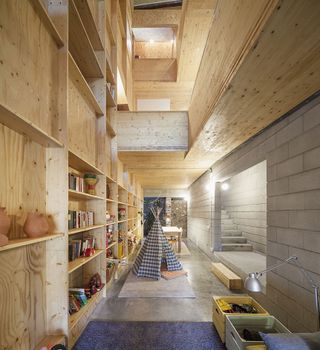
A central void at the heart of the building unites spaces across different floors

The third floor contains the house's bedrooms and bathrooms - the latter enclosed in a house-shaped explosed wood construction

A level difference between the front and rear of the long and narrow plot gave the architect an added challenge

The area of Sant Cugat is renowed for its history and culture, so preserving the house's historical elements was essential
Wallpaper* Newsletter
Receive our daily digest of inspiration, escapism and design stories from around the world direct to your inbox
-
 The 2024 Ivor Novello nominations for songwriting have been revealed
The 2024 Ivor Novello nominations for songwriting have been revealed77 British and Irish songwriters and composers make up this year's nominees, announced tonight at London's Groucho Club
By Charlotte Gunn Published
-
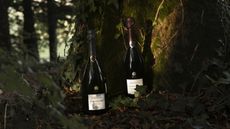 Why Bollinger’s La Grande Année 2015 champagne is worth celebrating
Why Bollinger’s La Grande Année 2015 champagne is worth celebratingChampagne Bollinger unveils La Grande Année 2015 and La Grande Année Rosé 2015, two outstanding cuvées from an exceptional year in wine-making
By Melina Keays Published
-
 Lexus installation explores time at Milan Design Week 2024
Lexus installation explores time at Milan Design Week 2024Lexus brought designer Hideki Yoshimoto’s ‘Beyond the Horizon’ to Milan’s Art Point, part of its ongoing series of collaborations with Fuorisalone
By Nargess Shahmanesh Banks Published
-
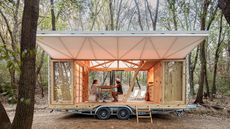 MOCA is a self-sufficient mobile home offering freedom to work (and roam)
MOCA is a self-sufficient mobile home offering freedom to work (and roam)MOCA (Mobile Catalyst) is a sustainable mobile home designed by the Institute for Advanced Architecture of Catalonia, and taking remote working to a new level
By Tianna Williams Published
-
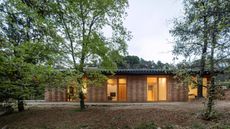 Low-energy house in Catalonia minimises its footprint to make the most of its site
Low-energy house in Catalonia minimises its footprint to make the most of its siteAlventosa Morell Arquitectes’ low-energy house in Catalonia nestles into the landscape
By Jonathan Bell Published
-
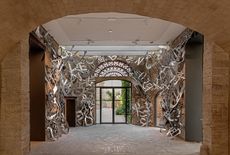 Hortensia Herrero Art Centre puts Valencia on the contemporary art map
Hortensia Herrero Art Centre puts Valencia on the contemporary art mapHortensia Herrero Art Centre launches in Valencia, offering a home for contemporary art to sit side by side with archaeological treasures
By Blaire Dessent Published
-
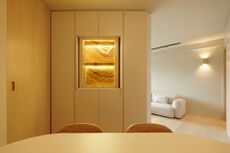 Collective, Hong Kong and Spain: Wallpaper* Architects Directory 2023
Collective, Hong Kong and Spain: Wallpaper* Architects Directory 2023With bases in Hong Kong and Spain, Collective joins the Wallpaper* Architects’ Directory 2023, our annual round-up of exciting emerging architecture studios
By Ellie Stathaki Published
-
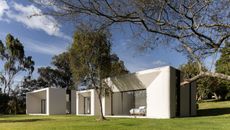 Nicolás y Nicolás, Spain and Ecuador: Wallpaper* Architects’ Directory 2023
Nicolás y Nicolás, Spain and Ecuador: Wallpaper* Architects’ Directory 2023With offices in Spain and Ecuador, Nicolás y Nicolás is part of the Wallpaper* Architects’ Directory 2023, our annual round-up of exciting emerging architecture studios
By Ellie Stathaki Published
-
 This light-filled Spanish house is defined by openness and geometry
This light-filled Spanish house is defined by openness and geometryA Spanish house by Arquitecturia Camps Felip is designed around its courtyards and its six volumes’ bold geometry
By Ellie Stathaki Published
-
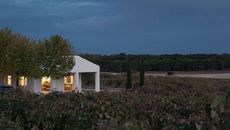 Spain’s Casa Primitiva is ruled by simplicity
Spain’s Casa Primitiva is ruled by simplicityThe pared-back Casa Primitiva by Hanghar fits in perfectly in its semi-rural Spanish context
By TF Chan Published
-
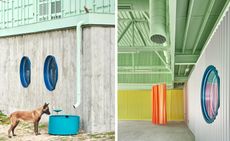 Architecture for animals leads the way at this school for dogs
Architecture for animals leads the way at this school for dogsDetails are designed with dogs in mind at Spain’s Educan School for Dogs, Humans and Other Species
By Hannah Silver Published